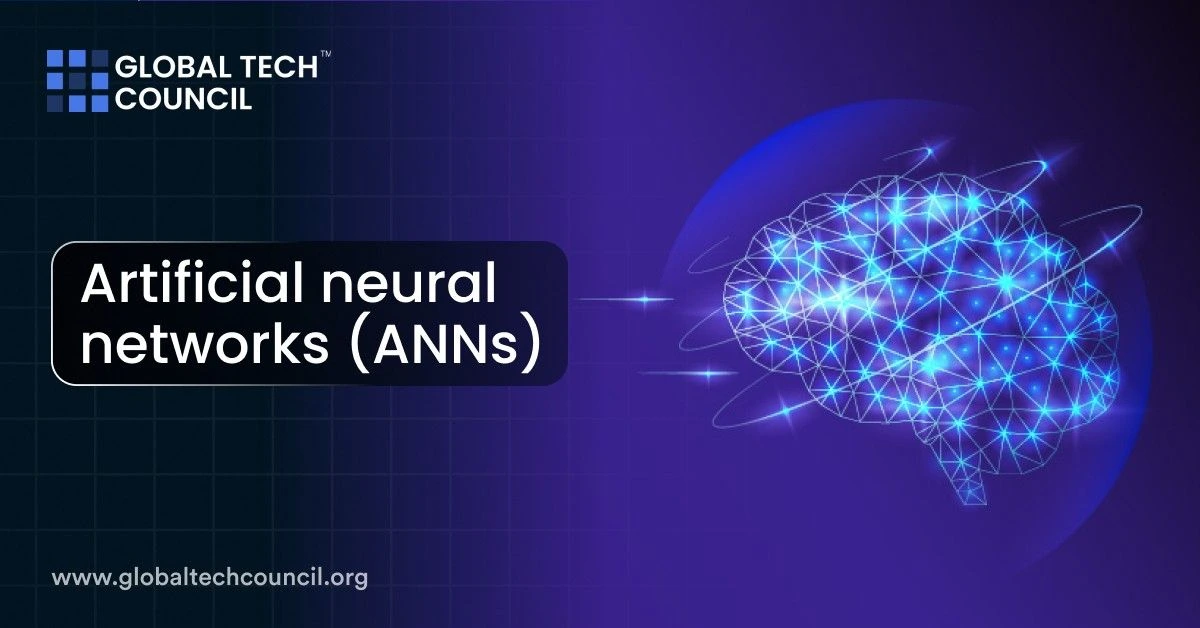
Artificial neural networks (ANNs) have become a key part of modern artificial intelligence (AI) and machine learning (ML). These networks are modeled after how the human brain works, and they use algorithms to detect patterns and make decisions from data.
What Are Artificial Neural Networks?
At their core, artificial neural networks are models designed to function like human brains, which process information through electrical signals sent between neurons (brain cells). In a similar way, ANNs consist of artificial neurons, often referred to as nodes, which communicate with one another to handle data. These neurons are arranged in different layers, where each layer processes input and passes it to the next for further analysis.
In practice, every neuron takes in data, processes it using math functions, and passes the results to the next layer. As the network processes the information, it “learns” by modifying the links between neurons based on the patterns it discovers. These connections have strengths, known as weights, which are updated during this learning phase.
How Neural Networks Are Structured
Layers and Neurons
A neural network has three kinds of layers:
- Input Layer: This layer handles the incoming data, which could be anything like an image or text. In this system, every node in a layer represents a particular characteristic of the data.
- Hidden Layers: These are where the real processing happens. They take in the data from the input layer and transform it to make it more useful for whatever task the network is solving. This is where patterns are identified that might not be easily seen.
- Output Layer: Once the hidden layers process the data, the final layer provides the answer or prediction, such as identifying if a picture contains a specific object or converting spoken words into text.
Neurons in these layers use an “activation function” to determine if they should pass their data to the next neuron.
Weights and Bias
The connections between neurons are not equal in strength. These connections are known as weights, and they shift as the network continues learning from the data. In addition, biases are added to fine-tune the network’s ability to handle the data effectively, allowing it to get closer to accurate results.
How ANNs Learn
Training is how artificial neural networks improve. During training, the network is given lots of data, and it modifies its weights and biases to minimize mistakes in its predictions. A method known as backpropagation is often used for this. It helps by adjusting the weights based on errors.
Here’s a simple breakdown of how the process works:
- Forward Pass: Data moves from the input layer through the network to the output. Each neuron receives input, processes it, and then passes the result to the next neuron.
- Error Calculation: The network’s output is compared to the actual result, and the difference or error is calculated.
- Backpropagation: This error is sent back through the network, causing the weights to adjust. This process repeats, helping the network improve over time.
Different Types of Neural Networks
There are various types of neural networks, each designed for different tasks:
- Feedforward Neural Networks (FNNs): This type has data flowing only one way, from input to output. They’re widely used in tasks like sorting images.
- Convolutional Neural Networks (CNNs): These are especially useful for processing visual data like images and videos, as they excel in recognizing patterns like shapes or edges.
- Recurrent Neural Networks (RNNs): When working with data that follows a sequence, such as text or time-based data, RNNs are effective. They can remember earlier inputs, making them great for tasks like speech recognition.
- Generative Adversarial Networks (GANs): These are used to generate new data. Two networks work together: one creates data, and the other evaluates it. This approach is popular in areas like image creation.
Real-World Applications of Neural Networks
Neural networks are widely used across many industries to solve real problems. Here are some common uses:
- Image Recognition: Neural networks are highly effective in identifying and categorizing images. They are often used in facial recognition technology and even medical imaging, where they help detect health issues in scans.
- Natural Language Processing (NLP): NLP focuses on helping machines understand human language. Neural networks are essential for things like language translation, voice recognition (e.g., virtual assistants like Alexa or Siri), and analyzing emotions in text.
- Autonomous Vehicles: Self-driving cars depend on neural networks to analyze huge amounts of data from sensors. This helps them understand their surroundings, spot objects, and make real-time decisions while navigating roads.
- Healthcare: In the medical field, neural networks can help by analyzing medical data. They are used to identify disease patterns in images and even predict future patient outcomes based on historical data.
Benefits and Limitations of Neural Networks
Neural networks are particularly good at finding patterns in huge datasets, especially when other methods might struggle. However, they come with some downsides. They require significant computing power and large datasets to be effective. Additionally, they can sometimes function as “black boxes,” making it difficult to fully understand how they arrived at a particular decision.
Conclusion
Artificial neural networks are shaping the future by enabling machines to take on tasks that used to require human intelligence. Whether it’s recognizing objects in images, forecasting trends, or understanding speech, ANNs provide important tools for analyzing and interpreting complex data. By understanding their design and how they function, industries can solve more complicated problems efficiently, leading to smarter solutions.